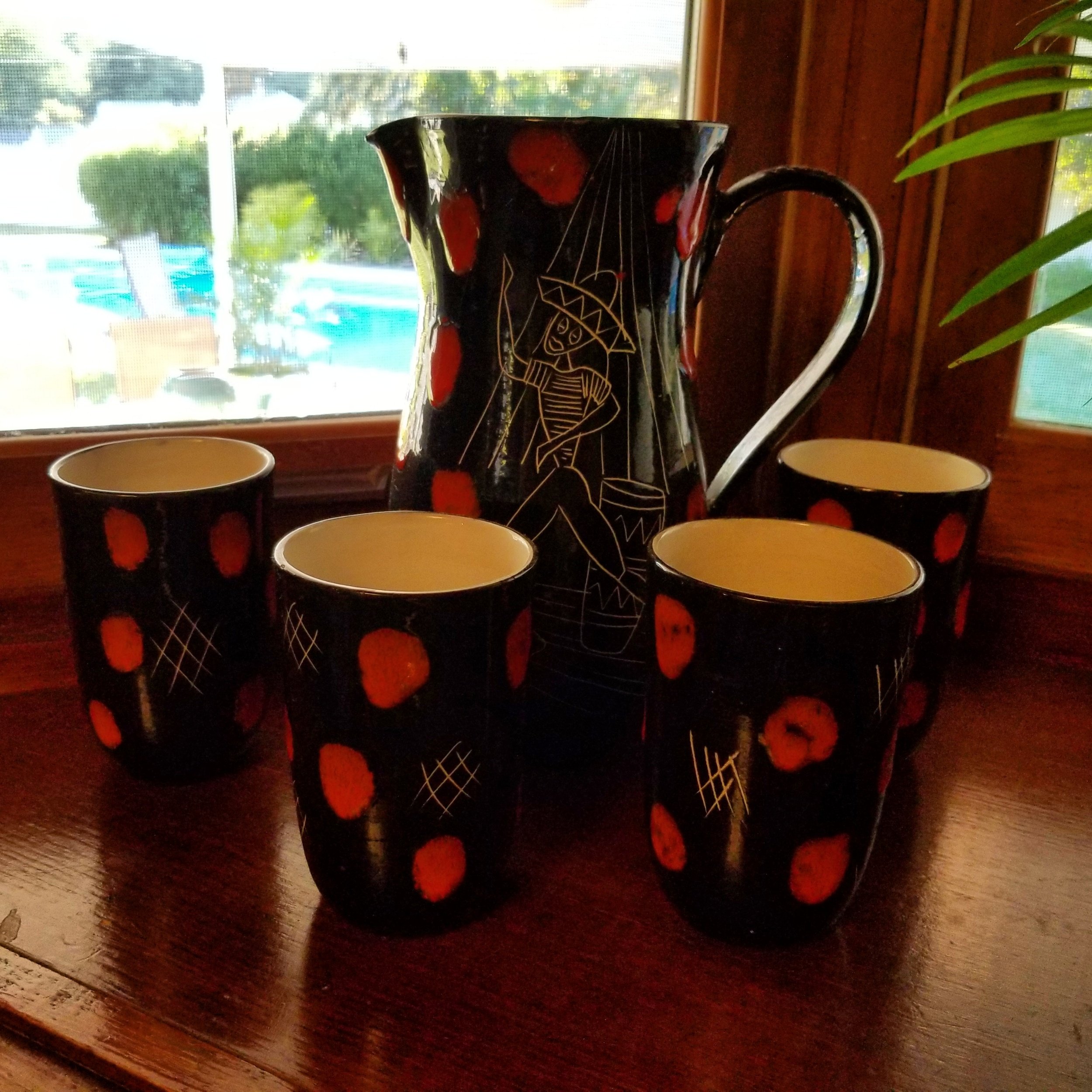Kiln to Kitchen: Mid-Century Pottery & Women’s Lives in '60s Italy
In a windowsill above my kitchen sink sits a handcrafted ceramic water pitcher set from the 1960s – just look at that bad-ass etched marionette. My grandmother, Michelina (Mickey), purchased it while living in Ostuni, Italy in the early ‘60s while my grandfather, Michael (everyone called him Ed), was stationed at a US Air Force base, perhaps the nearby San Vito dei Normanni Air Station.
It’s a funky piece of art and a definite conversation starter, but it’s also a link to the lives of Italian women of that era. It reflects the artisanal tradition of the region and inspired me to learn about the cultural backdrop of Ostuni's women, my grandmother’s friends.
Artisanal Crafts-womanship in Ostuni
During the ‘60s, Ostuni, which I’ve seen called both “The White City” or “La Città Bianca” as well as “The White Pearl” or “La Perla Bianca,” was known for its whitewashed houses. It was also known for having a vibrant artisan community, flush with pottery and textile-making. It also looked pretty frickin cool, as evidenced below.
The 1960s in Ostuni, like many other places in that pivotal era, were characterized by old-world tradition smashing headfirst into mid-century modernity (which now looks quaint itself, but, you know, progress). Ostuni's economy was mainly agrarian (read: farm-based), as was much of Italy, but it was supplemented by the afore-mentioned artisanal crafts.
While the famous artisans of the day were (get ready for a shock) men, women played their own quiet role, working alongside family members in small workshops. I guess that, given the town’s legacy of pottery and art, it’s no coincidence that my grandmother returned from Ostuni with not just my pitcher set but a second, very different, one that my mother currently owns.
A Cultural Shift for the Ladies
By the early 60s, Italy was out of the fascist period of the 1920s and 1930s (thanks, Mussolini, we’re good), during which some women took up an important role of resistance. The Italian Constitution and granting of suffrage to women, both in 1946, marked a turning point for women’s rights, and even opened the door for women to (grab your pearls!) enter the workforce. However, in small towns like Ostuni, most Italian women still held traditional roles, managing endless household responsibilities: cooking, cleaning child-rearing, husband-rearing.
When my grandmother was there with my grandfather and two small children – my mom and her sister, a year apart and both under six at the time; my uncle didn’t arrive on the scene until a few years later – Italy had just begun to enter its feminist movement.
In 1963, right around the time my family left Italy to return to the US, Italian women were granted access to public employment. But it wasn’t until 1968 that adultery by a woman was decriminalized (I’m just going to go ahead and assume that men were never being jailed for cheating), and the abolishment of honor killings and shotgun marriages took until 1981. Let me say that again for those of you in the back: nineteen-eighty-fucking-one.
Laws against stalking (2009) and sexual violence (2013) came far later. I mean, shit.
Looking Back
My grandmother talked about her years in Italy with a misty-eyed fondness. She was a young bride and new mother, a cosmopolitan Manhattan-bred woman living in a rural village in the country of her parents, and I’m sure it was exciting. She didn’t even speak Italian beyond a few choice curse words (she had a mouth on her!), but she still made lifelong friends among her neighbors in Ostuni.
Over time, Ostuni’s unique character and artistic heritage began drawing international tourists, which provided local artisans, including women, new opportunities to sell their wares. This burgeoning tourism and the growing movement towards social equality may have allowed local Italian women to realize a sense of independence and assert some actual influence within their households and the community.
At least, I hope so, for Mickey and her friends’ sake.
Want to read more about my grandparents and their influence on my vintage collection? Check out “My Vintage Telefunken: A Family Heirloom Likely Made by Women.”

